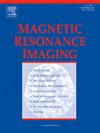动态磁共振造影评价血供及其在脊柱肿瘤手术中的应用。
IF 2
4区 医学
Q2 RADIOLOGY, NUCLEAR MEDICINE & MEDICAL IMAGING
引用次数: 0
摘要
目的:本研究旨在评估动态对比增强磁共振成像(DCE-MRI)在评估脊柱肿瘤血供中的应用,及其对脊柱肿瘤手术中术中出血量和输血需求的预测价值。方法:回顾性分析2018年12月至2020年12月在河北工业大学附属医院接受手术治疗的20例单一椎体肿瘤患者的临床资料。根据DCE-MRI将患者分为两组:富血供肿瘤组(15例,术前栓塞12例)和非富血供肿瘤组(5例,未栓塞)。主要观察指标为出血量、手术时间和输血量。结果:DCE-MRI血流量(BF)比值与DSA评分呈显著正相关(r = 0.569,P )结论:DCE-MRI BF比值与术中出血量及输血需要量显著相关,为脊柱肿瘤手术提供有价值的术前指导。它的非侵入性预测能力比传统血管造影具有明显的优势,有助于更明智的手术计划和患者护理。本文章由计算机程序翻译,如有差异,请以英文原文为准。
Evaluation of blood supply using dynamic contrast-enhanced magnetic resonance imaging and its application in spinal tumor surgery
Objective
This study aimed to assess the utility of dynamic contrast-enhanced magnetic resonance imaging (DCE-MRI) in evaluating blood supply for spinal tumors and its predictive value for intraoperative blood loss and transfusion requirements during spinal tumor surgery.
Methods
We retrospectively analyzed clinical data from 20 patients with single vertebral tumors who underwent surgery at the Affiliated Hospital of Hebei University of Technology between December 2018 and December 2020. Patients were categorized based on DCE-MRI into two groups: those with tumors indicating rich blood supply (15 patients, with 12 undergoing preoperative embolization) and those with non-rich blood supply tumors (5 patients, without embolization). The primary outcomes measured were blood loss, operation time, and blood transfusion.
Results
The blood flow (BF) ratio from DCE-MRI showed a significant positive correlation with DSA scores (r = 0.569, P < 0.05), indicating the reliability of DCE-MRI in evaluating tumor vascularity. In the group with rich blood supply tumors, the median DSA score was 3.25 (range 3–4), and the BF ratio ranged from 1.84 to 5.14, with a median value greater than 1.8. The BF ratio also correlated significantly with intraoperative bleeding (r = 0.537, P < 0.001) and blood transfusion requirements (r = 0.579, P < 0.001). The correlation with operation time was less pronounced (r = 0.259, P < 0.001).
Conclusion
The DCE-MRI BF ratio is significantly correlated with intraoperative blood loss and transfusion requirements, providing valuable preoperative guidance for spinal tumor surgery. Its non-invasive predictive capabilities offer a clear advantage over traditional angiography, facilitating more informed surgical planning and patient care.
求助全文
通过发布文献求助,成功后即可免费获取论文全文。
去求助
来源期刊

Magnetic resonance imaging
医学-核医学
CiteScore
4.70
自引率
4.00%
发文量
194
审稿时长
83 days
期刊介绍:
Magnetic Resonance Imaging (MRI) is the first international multidisciplinary journal encompassing physical, life, and clinical science investigations as they relate to the development and use of magnetic resonance imaging. MRI is dedicated to both basic research, technological innovation and applications, providing a single forum for communication among radiologists, physicists, chemists, biochemists, biologists, engineers, internists, pathologists, physiologists, computer scientists, and mathematicians.
 求助内容:
求助内容: 应助结果提醒方式:
应助结果提醒方式:


